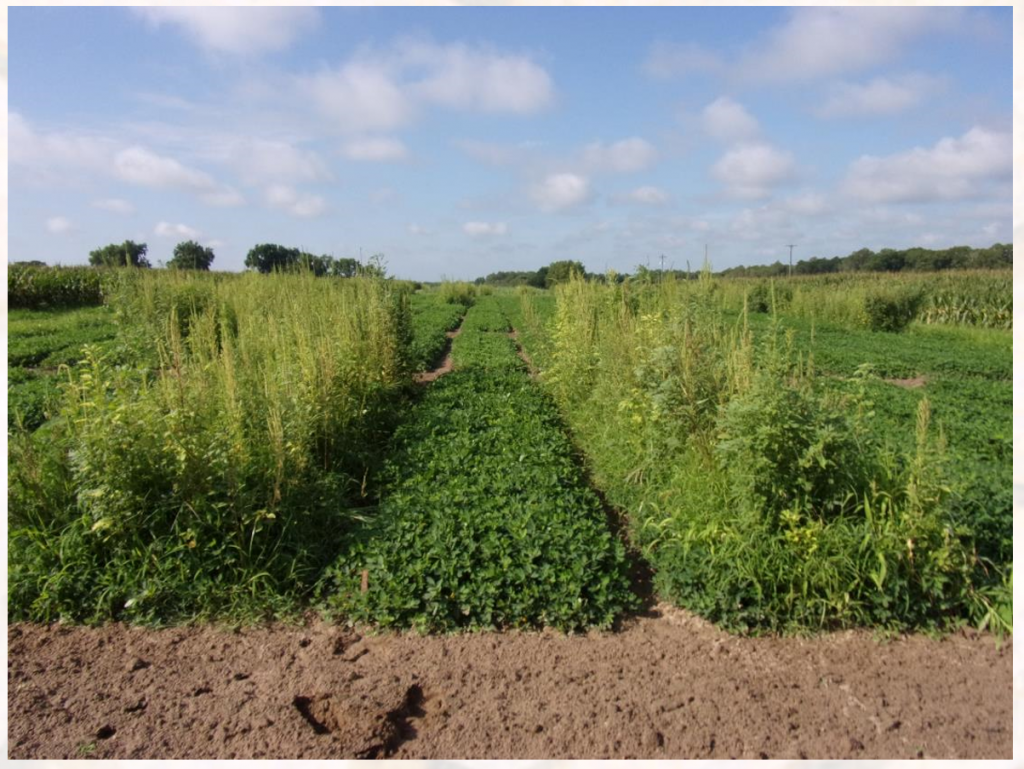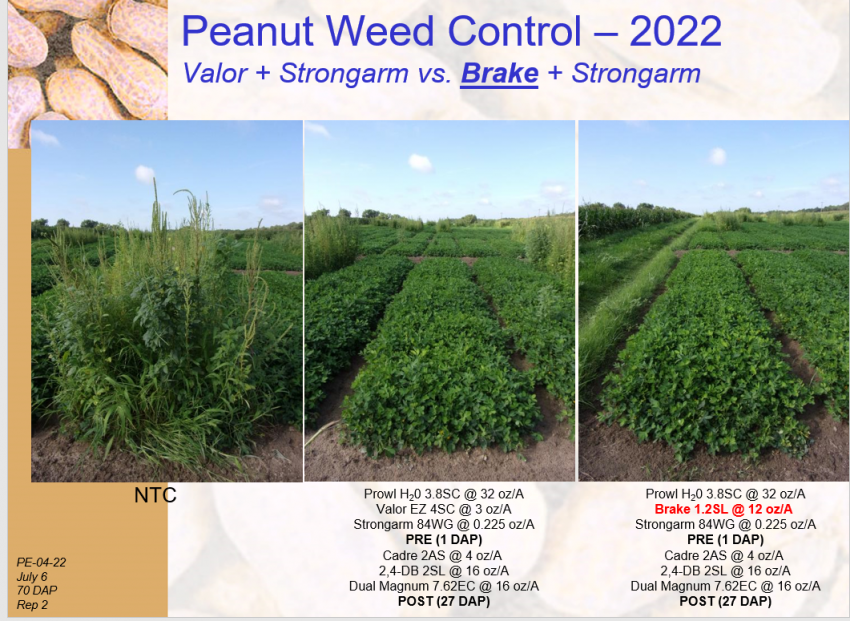
Weedy peanuts don’t have to be a part of your production challenges. Dr. Protsko says “Start clean, use twin rows, STRONG Pre-emergents, timely herbicide application of post emergents, and hand weeding.” Credit: Eric Prostko, UGA Weed Specialist
Article by Dr. Eric Protkso, UGA Weed Scientist
In the world of herbicide development, much of the emphasis by major U.S. agricultural chemical companies is on the “big acreage” crops such as field corn, soybean and wheat. I can’t blame them though, since there were only about 88.58 million acres of corn, 87.45 million acres of soybean and 45.74 million acres of wheat planted in 2022! Although extremely important to me and southern agriculture, 1.45 million acres of peanut planted pales in comparison to those biggies.
Although the peanut might be a small (but mighty) fish in a big pond, peanut growers have been fortunate to have 9 new herbicides added to their weed control toolbox since 1999. These include Outlook (1999), Strongarm (2000), Valor (2001), Spartan (2003), Cobra (2005), Fusilade (2009), Warrant (2014), Zidua (2017) and Anthem Flex (2020). I very much appreciate the Ag Industry’s efforts here!
In the latter part of January 2023, peanut growers received another new herbicide for their toolbox. After more than a decade of research, Brake (fluridone) was fully registered for use in peanut by the E.P.A. Fluridone, sold under the trade name of Sonar, has been used for aquatic weed control since 1986. Brake was registered for use in cotton in 2016. Peanut growers might consider adding Brake to their current weed control programs for two reasons.
–
1. Brake provides very effective residual control of Palmer amaranth, peanut public enemy Number 1.
2. Brake has a mode of action (WSSA/HRAC Group 12 – phytoene desaturase inhibitor) that has not been used much in peanuts for several years (more on this in the next paragraph). Thus, a great time to have another mode of action around since PRE/POST resistance to the WSSA/HRAC Group 14 herbicides (i.e. PPO’s) in Palmer amaranth was confirmed in Georgia. As a reminder, popular PPO-herbicides include such favorites as Aim, Cobra, ET, Goal, Reflex, Valor and Ultra Blazer.
–
Seasoned peanut farmers might remember an older herbicide sold under the trade name of Zorial (norflurazon). Zorial was registered for peanut in 1993 but for whatever reason, never became a mainstreamer (for the record, my official peanut weed science career began in 1997). Zorial had the same mode of action as Brake (WSSA/HRAC Group 12). Zorial is now sold commercially as Solicam. Peanut is still on that label.

–
Other important things to remember are that Brake will need at least 0.5” of irrigation or rainfall after application to perform up to its potential. Also, Brake will cause some peanut injury in the form of stunting and bleaching, especially when higher rates are used, and wetter conditions prevail (Figure below). Lastly, the normal use rate of Brake 1.2LC will be 12 oz/A (0.113 lb ai/A) and cost somewhere around $16/A. The most recent Brake label, which includes peanut, can be found here: Brake Herbicide Label

- Federal Estate Tax and Gift Tax Limits Announced For 2026 - December 19, 2025
- Why Do I Have So Many Open Cows? Causes of Reproductive Failure - December 19, 2025
- Wiregrass Cotton Expo Offers Resources, Research, & Real Solutions for Growers in Southeast – January 22 - December 19, 2025
